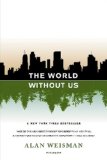Summary | Excerpt | Reviews | Beyond the Book | Readalikes | Genres & Themes | Author Bio

"They're called nurdles. They're the raw materials of
plastic production. They melt these down to make all kinds of things." He walks
a little farther, then scoops up another handful. It contains more of the same
plastic bits: pale blue ones, greens, reds, and tans. Each handful, he
calculates, is about 20 percent plastic, and each holds at least 30 pellets.
"You find these things on virtually every beach these days.
Obviously they are from some factory."
However, there is no plastic manufacturing anywhere nearby.
The pellets have ridden some current over a great distance until they were
deposited here—collected and sized by the wind and tide.
In Thompson's laboratory at the University of Plymouth,
graduate student Mark Browne unpacks foil-wrapped beach samples that arrive in
clear zip-lock bags sent by an international network of colleagues. He transfers
these to a glass separating funnel, filled with a concentrated solution of sea
salt to float off the plastic particles. He filters out some he thinks he
recognizes, such as pieces of the ubiquitous colored ear-swab shafts, to check
under the microscope. Anything really unusual goes to the FTIR Spectrometer.
Each takes more than an hour to identify. About one-third
turn out to be natural fibers such as seaweed, another third are plastic, and
another third are unknown—meaning that they haven't found a match in their
polymer database, or that the particle has been in the water so long its color
has degraded, or that it's too small for their machine, which analyzes fragments
only to 20 microns—slightly thinner than a human hair.
"That means we're underestimating the amount of plastic
that we're finding. The true answer is we just don't know how much is out
there."
What they do know is that there's much more than ever
before. During the early 20th century, Plymouth marine biologist Alistair Hardy
developed an apparatus that could be towed behind an Antarctic expedition boat,
10 meters below the surface, to sample krill—an ant-sized, shrimp-like
invertebrate on which much of the planet's food chain rests. In the 1930s, he
modified it to measure even smaller plankton. It employed an impeller to turn a
moving band of silk, similar to how a dispenser in a public lavatory moves cloth
towels. As the silk passed over an opening, it filtered plankton from water
passing through it. Each band of silk had a sampling capacity of 500 nautical
miles. Hardy was able to convince English merchant vessels using commercial
shipping lanes throughout the North Atlantic to drag his Continuous Plankton
Recorder for several decades, amassing a database so valuable he was eventually
knighted for his contributions to marine science.
He took so many samples around the British Isles that only
every second one was analyzed. Decades later, Richard Thompson realized that the
ones that remained stored in a climate-controlled Plymouth warehouse were a time
capsule containing a record of growing contamination. He picked two routes out
of northern Scotland that had been sampled regularly: one to Iceland, one to the
Shetland Islands. His team pored over rolls of silk reeking of chemical
preservative, looking for old plastic. There was no reason to examine years
prior to World War II, because until then plastic barely existed, except for the
Bakelite used in telephones and radios, appliances so durable they had yet to
enter the waste chain. Disposable plastic packaging hadn't yet been invented.
By the 1960s, however, they were seeing increasing numbers
of increasing kinds of plastic particles. By the 1990s, the samples were flecked
with triple the amount of acrylic, polyester, and crumbs of other synthetic
polymers than was present three decades earlier. Especially troubling was that
Hardy's plankton recorder had trapped all this plastic 10 meters below the
surface, suspended in the water. Since plastic mostly floats, that meant they
were seeing just a fraction of what was actually there. Not only was the amount
of plastic in the ocean increasing, but ever smaller bits of it were
appearing—small enough to ride global sea currents.
Copyright © 2007 by Alan Weisman. All rights reserved.






Your guide toexceptional books
BookBrowse seeks out and recommends the best in contemporary fiction and nonfiction—books that not only engage and entertain but also deepen our understanding of ourselves and the world around us.